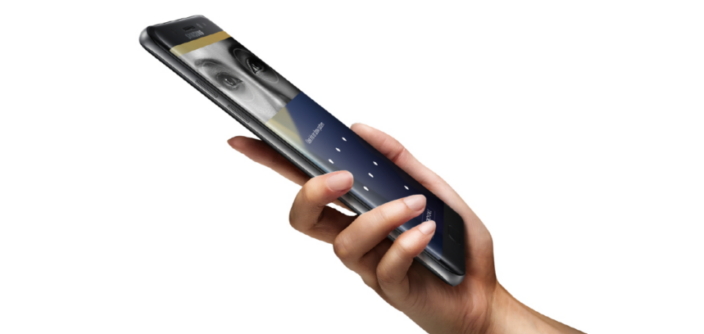How Samsung Pass Can Change Your Mobile Experience
on August 19, 2016

The iris scanner of the Galaxy Note7 provides the ultimate level of privacy and security by offering secure biometric authentication integrated with Samsung’s trusted Knox platform. With the device’s iris or fingerprint scanner, the new Samsung Pass can act as a master key for mobile banking services or website login on Samsung Internet, the default browser for Galaxy devices. In this way, Samsung Pass lets users enjoy a highly optimized browsing experience without having to type in an ID or password—or even touch their phone.
No IDs. No Passwords. Just You.
These days, people do just about everything online. From paying bills to shopping for birthday gifts, consumers rely on the Internet to carry out the simplest of everyday tasks. But remembering passwords for each different account can be a major headache, not to mention extremely time consuming.
Furthermore, rising identity theft has forced companies to apply stricter ID and password requirements. These specifications differ from company to company, adding even more frustration to the equation.
To mitigate this growing inconvenience, Samsung provided Galaxy device users the Web Sign-in option on Samsung Internet 4.0. Previously, this feature protected a user’s identity with fingerprint authentication when logging in to websites. But now, with Samsung Pass and the new Samsung Internet 4.2, which is available on the Galaxy Note7, navigating password-protected websites launched on Samsung Internet is even easier and safer.
The new iris recognition feature is a convenient way to accurately authenticate a user’s identity. With a simple glance, a user can safely access their email account or log in to a travel website to book a flight.
While Samsung Pass makes it easy to quickly enable auto login for websites and apps, it will also allow users to use financial, medical and healthcare services—ones that require additional security—with biometric authentication. For instance, iris recognition provides an added layer of security for sensitive banking transactions, such as high-value money transfers.
In fact, many banks and financial institutions recognize the added security that iris scanning technology provides. Which is why several leading banks have teamed up with Samsung to begin integrating the Galaxy Note7’s iris scanner and Samsung Pass into the mobile banking experience.
But that’s just the beginning. Samsung Pass could eventually replace IDs and passwords altogether for third-party services like mobile games and social media channels. It might even one day replace physical keys, like those we use to get inside our homes or start our car engines. And, as we continue to become more connected, Samsung Pass could even let us activate Internet of Things (IoT) devices with a simple iris scan.
Safe, Secure and Speedy Sign In
Getting started with Samsung Pass is easy. A user must first sign up for Samsung Pass by registering his or her biometric information, which is then coded, encrypted and stored securely under the protection of Knox. Fast IDentity Online (FIDO) Protocol also provides the key to this encrypted information, hence, enabling online biometric authentication.
As a result, users no longer have to save or manage their IDs and passwords for their most frequently used websites or apps from the Settings menu.
Along with the launch of the Galaxy Note7, Samsung Pass for Web Sign-in on Samsung Internet and mobile banking services will be available from August 19 in Korea and will gradually be expanded worldwide.
*All functionality features, specifications and other product information provided in this document including, but not limited to, the benefits, design, pricing, components, performance, availability, and capabilities of the product are subject to change without notice or obligation.



